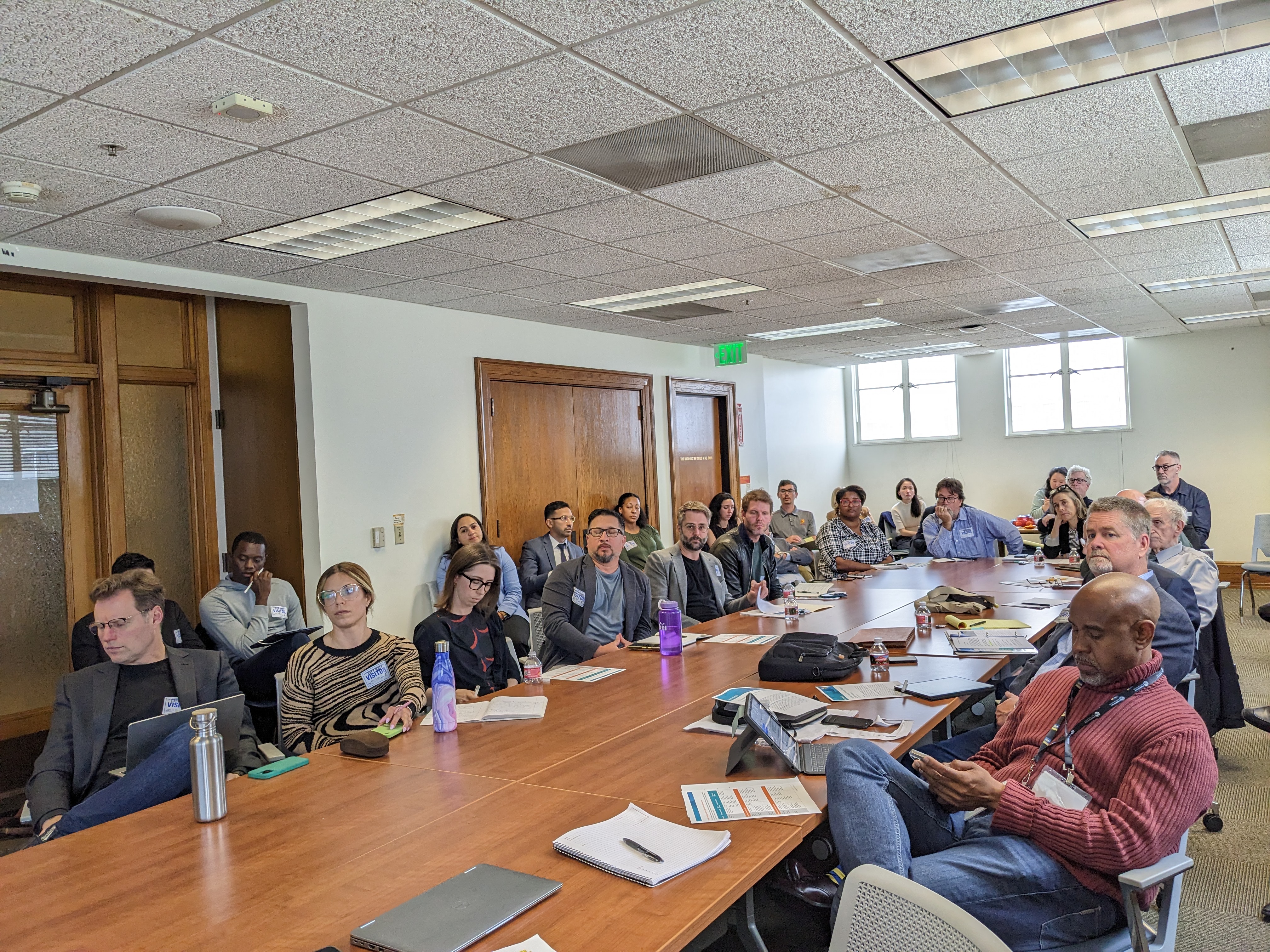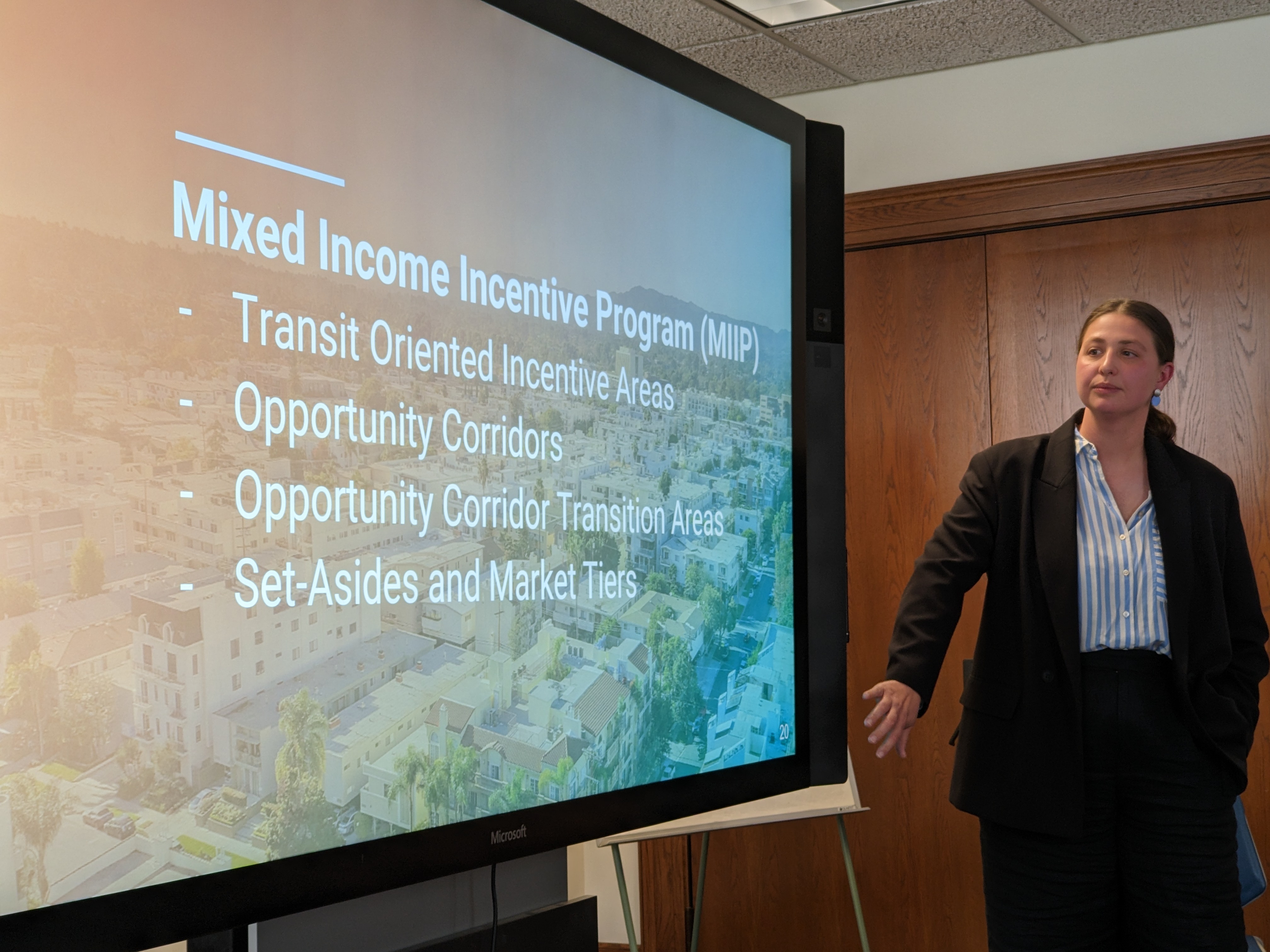From the desk of Will Wright, Hon. AIA|LA
Director of Government & Public Affairs


MY THOUGHTS ON THE CITYWIDE HOUSING INCENTIVE PROGRAM
On May 15th, AIA|LA and Los Angeles City Planning hosted a roundtable discussion to learn more about the recently released draft Citywide Housing Incentive Program (CHIP) Ordinance–a key component of Los Angeles’ Housing Element Rezoning Program.
We’re grateful to LACP for their commitment and dedication to identifying proposals and programs that can address our ongoing housing challenge. Many of us have been involved with the Housing Element update process since 2019 and it’s reassuring to see genuine progress being made over these past 5+ years. Increasing our region’s zoning capacity (for housing) and making more housing ‘by right’ will go a long way towards creating more housing affordability and certainty for all. LACP and its housing element team have done a terrific job balancing all of the input and delivering a draft rezoning program we can all be proud of!
In general, CHIP along with the Citywide Adaptive Reuse Ordinance, the Housing Elements Sites Ordinance, the Residents Protection Ordinance, (and even the upcoming Landscape and Site Design Ordinance), will help advance the ability of the ‘market’ to deliver financially feasible and equitable housing solutions. Quick and effective adoption of these ordinances is imperative. Especially if the ordinances help to create more certainty for communities — and help make projects less litigiously vulnerable!
However, there is a balance of mandates and incentives that need to be further fine-tuned and ’tested’ with real-world projects. Otherwise, these policies are just ’noise’ that can never reach the light of day. (SB 9 for instance was a loud policy that was just too complicated to implement (due to local zoning constraints) and continues to create substantial confusion and derision, even though a real-world application of how SB 9 may be able to transform neighborhoods can be found by walking the beautiful neighborhood of Angenelo Heights, with its diversity of housing types and its splendid mixture of incomes.)
A couple of areas of CHIP that deserve more attention:
1. By excluding single-family neighborhoods from the CHIP program, then you accidentally (or unintentionally) exclude the ability for opportunity corridors to be buffered by ’transitional’ zones that can buffer lower-scale residential neighborhoods. And it’s this ‘missing middle’, old-school housing typology that most people in LA love! The low-rise courtyard apartments, etc. By excluding the applicability of the Mixed Income Incentive Program to those single-family residential streets that are immediately adjacent to opportunity corridors and commercial boulevards, then you continue to compound the challenge we’re currently all enduring.
2. Housing for Families needs to be more thoroughly ‘tested’ with developers/ funders/ lenders, etc – what will make it ‘pencil out’ so that more housing for families is built in our urban core? As tax-payers, we cannot afford to subsidize everything, nor should the public sector always be burdened with the risk of bringing homes for families to fruition. That’s what the private sector does best – it marginalizes and manages risk more effectively.
3. If we want to encourage urban infill development (especially on the typical 50’ x 150’ lot), then we need housing policies that facilitate the small mom-and-pop ‘developer’ to build these homes (5 to 10 to 20 units) – and make it financially feasible to do so! That is, on some of these smaller lots, it will be a disservice to neighborhoods to require affordability covenants on smaller projects – especially if those affordability covenants only result in bulkier projects built on multiple-lots, that require clear-cutting of existing buildings, etc. Otherwise, only large-scale developers can afford to build these homes by aggregating numerous parcels together to build 100+ units at a time. 100+ units at a time are excellent to help address our supply constraints, but that housing typology continues to bloat our neighborhood streets and creates chunky block-size housing projects that only REITs can afford to deliver, rather than smaller-grained, (and in my opinion) more charming housing projects.
How do we get the unbiased and honest ‘housing’ practitioner more directly involved in shaping these ordinances, etc?
To me, that’s the central challenge.
YOUR THOUGHTS?
If you have ideas and/or recommendations on how to improve the CHIP ordinance, please contact me at will@aialosangeles.org and we’ll integrate your points into AIA|LA’s response letter.
AIA|LA CITY LEADERS BREAKFAST RECEPTIONS
Please join us at our next four receptions. We’ll be organizing more in the summer!
- Dr. Va Lecia Adams Kellum – CEO, Los Angeles Homeless Services Authority (LAHSA) = May 30 (8am) // RSVP HERE
- Alberto M. Carvalho – Superintendent, Los Angeles Unified School District = May 31 (8am) // RSVP HERE
AIA|LA & LACP DESIGN REVIEW SESSIONS
In 2024, we will coordinate thirty-six virtual design review sessions, which will serve as opportunities for architects and designers to help the Los Angeles City Planning’s Urban Design Studio critically review upcoming projects throughout the City.
Upcoming sessions include:
Tuesday, June 4 (10am – 12pm)
Tuesday, Jun 11 (10am – 12pm)
Tuesday, Jun 18 (10am – 12pm)
Join us here w/ RSVP to gain zoom access.
Reach out and get more involved!
FOR MORE INFORMATION:
Will Wright, Hon. AIA|LA
Director, Government & Public Affairs
t: 213.639.0764
e: will@aialosangeles.org
www.aialosangeles.org







